1. 安装轻量级网络仿真工具Mininet
安装步骤
- git clone git://github.com/mininet/mininet
- cd mininet/util
- ./install.sh -a
2.用字符命令搭建如下拓扑,要求写出命令
- sudo mn --topo linear,3
-

-

-
展示网络信息
- Net
- sudo mn --topo tree,depth=2,fanout=3
-
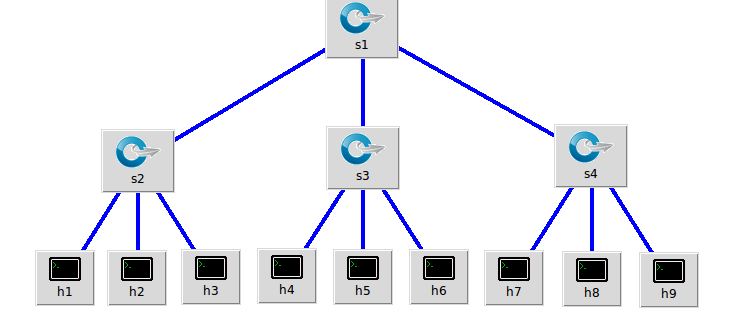
-
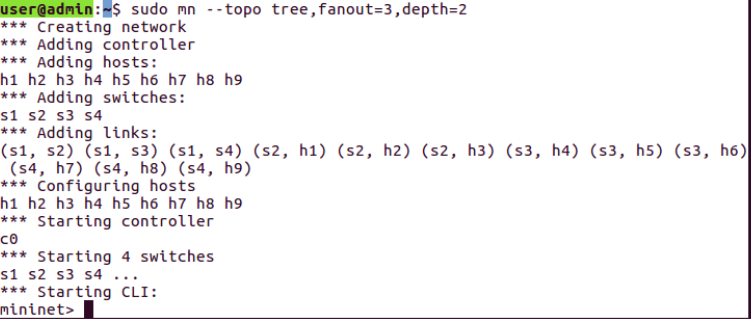
-
展示网络信息
- Net
3.利用可视化工具搭建如下拓扑,并要求支持OpenFlow 1.0 1.1 1.2 1.3,设置h1(10.0.0.10)、h2(10.0.0.11)、h3(10.0.0.12),拓扑搭建完成后使用命令验证主机ip,查看拓扑端口连接情况。
-
打开miniedit.py
-

-
添加网络组件,建立拓扑
-
-设置属性
-
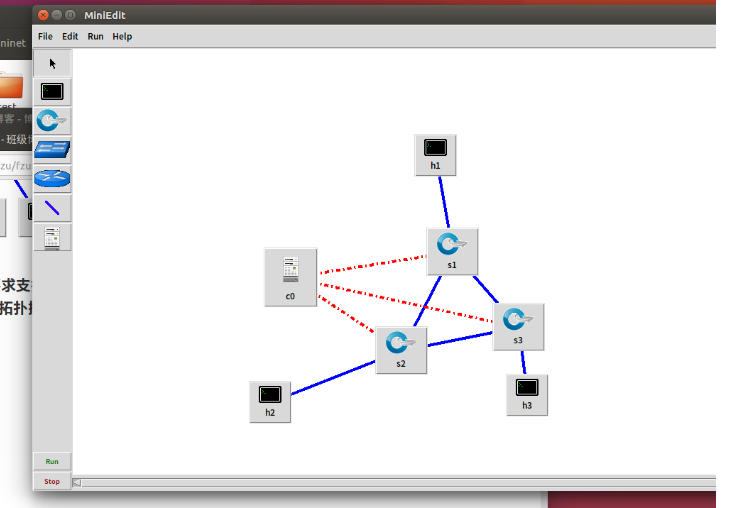
-

-

-

-
使用命令验证主机ip,查看拓扑端口情况
-
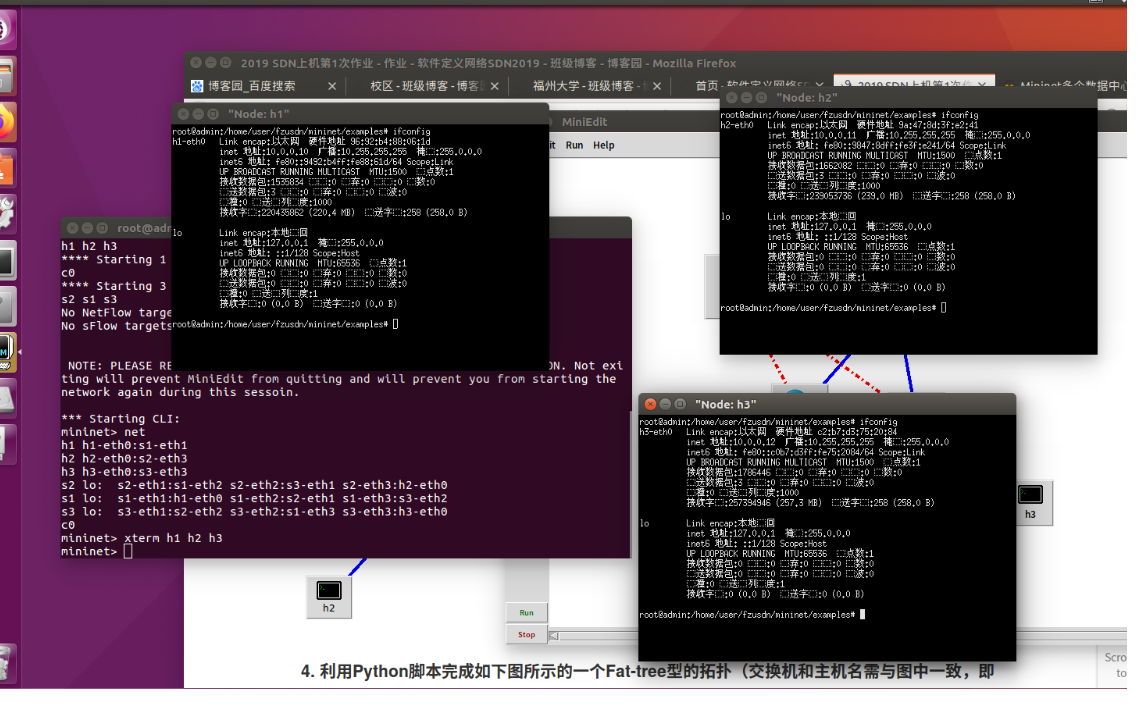
4利用Python脚本完成如下图所示的一个Fat-tree型的拓扑(交换机和主机名需与图中一致,即s1s6,h1h8,并且链路正确,请给出Mininet相关截图)
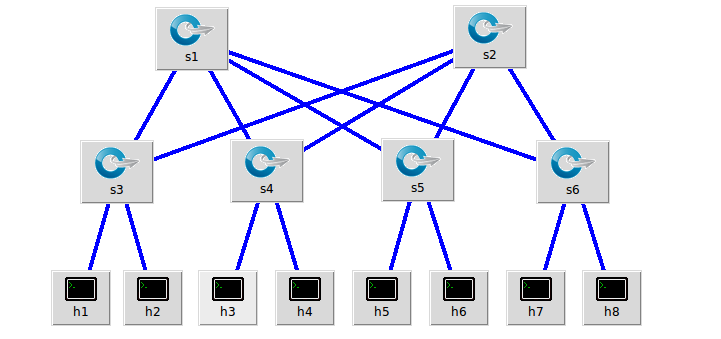
- python代码
from mininet.topo import Topo
from mininet.net import Mininet
from mininet.node import RemoteController,CPULimitedHost
from mininet.link import TCLink
from mininet.util import dumpNodeConnections
class MyTopo(Topo):
"Simple topology example."
def __init__(self):
"Create custom topo."
# Initialize topology
Topo.__init__(self)
L1 = 2
L2 = 4
c = []
a = []
# add core ovs
for i in range(L1):
sw = self.addSwitch('s{}'.format(i+1))
c.append(sw)
# add aggregation ovs
for i in range(L2):
sw = self.addSwitch('s{}'.format(L1+i+1))
a.append(sw)
# add links between core and aggregation ovs
for i in range(L1):
sw1 = c[i]
for sw2 in a[0: :1]:
self.addLink(sw2, sw1)
#add hosts and its links with aggregation ovs
count = 1
for sw1 in a:
for i in range(2):
host = self.addHost('h{}'.format(count))
self.addLink(sw1, host)
count += 1
topos = {'mytopo': (lambda: MyTopo())
}
- 输入
sudo mn --custom t4.py --topo mytopo --switch ovsk,protocols=OpenFlow10
- 运行截图
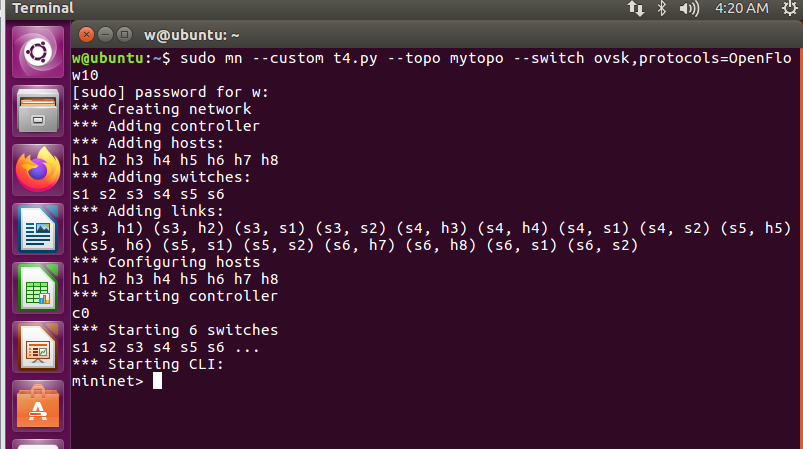






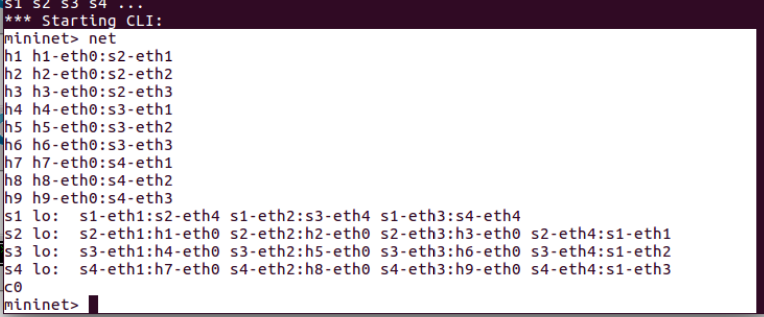


【推荐】编程新体验,更懂你的AI,立即体验豆包MarsCode编程助手
【推荐】凌霞软件回馈社区,博客园 & 1Panel & Halo 联合会员上线
【推荐】抖音旗下AI助手豆包,你的智能百科全书,全免费不限次数
【推荐】轻量又高性能的 SSH 工具 IShell:AI 加持,快人一步
· .NET 9 new features-C#13新的锁类型和语义
· Linux系统下SQL Server数据库镜像配置全流程详解
· 现代计算机视觉入门之:什么是视频
· 你所不知道的 C/C++ 宏知识
· 聊一聊 操作系统蓝屏 c0000102 的故障分析
· DeepSeek V3 两周使用总结
· 回顾我的软件开发经历(1)
· C#使用yield关键字提升迭代性能与效率
· 低成本高可用方案!Linux系统下SQL Server数据库镜像配置全流程详解
· 4. 使用sql查询excel内容